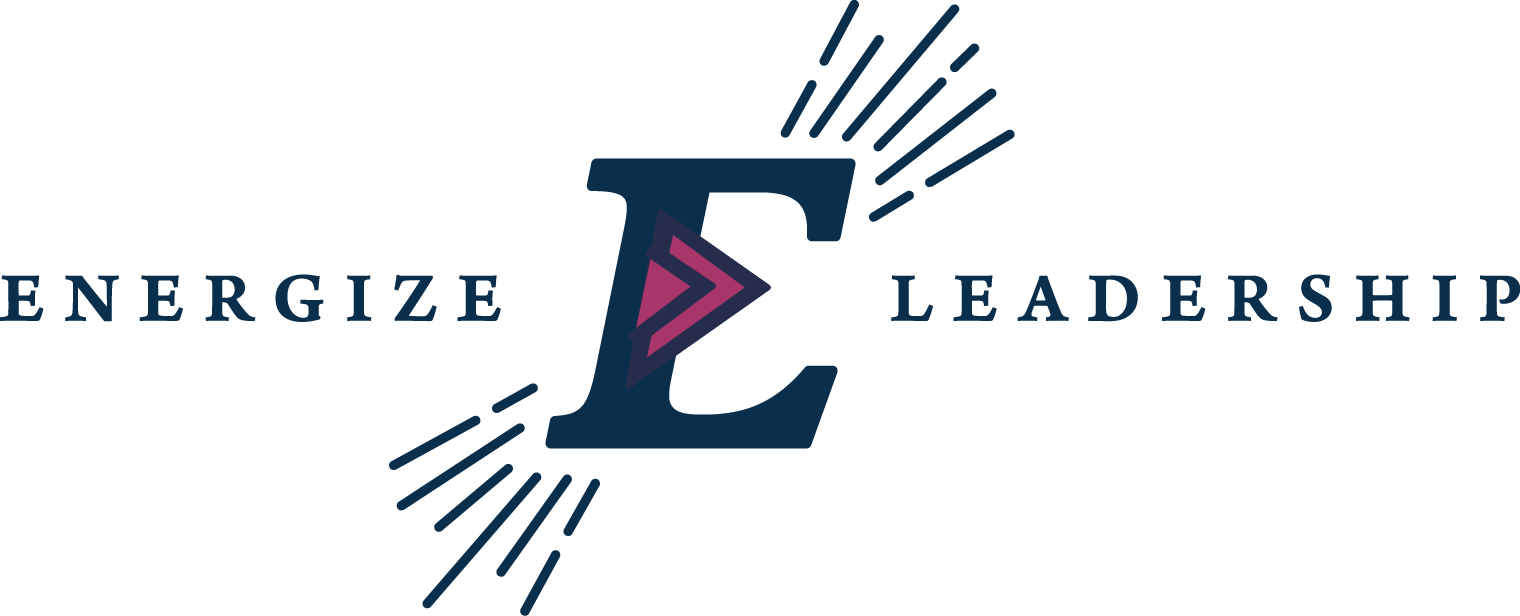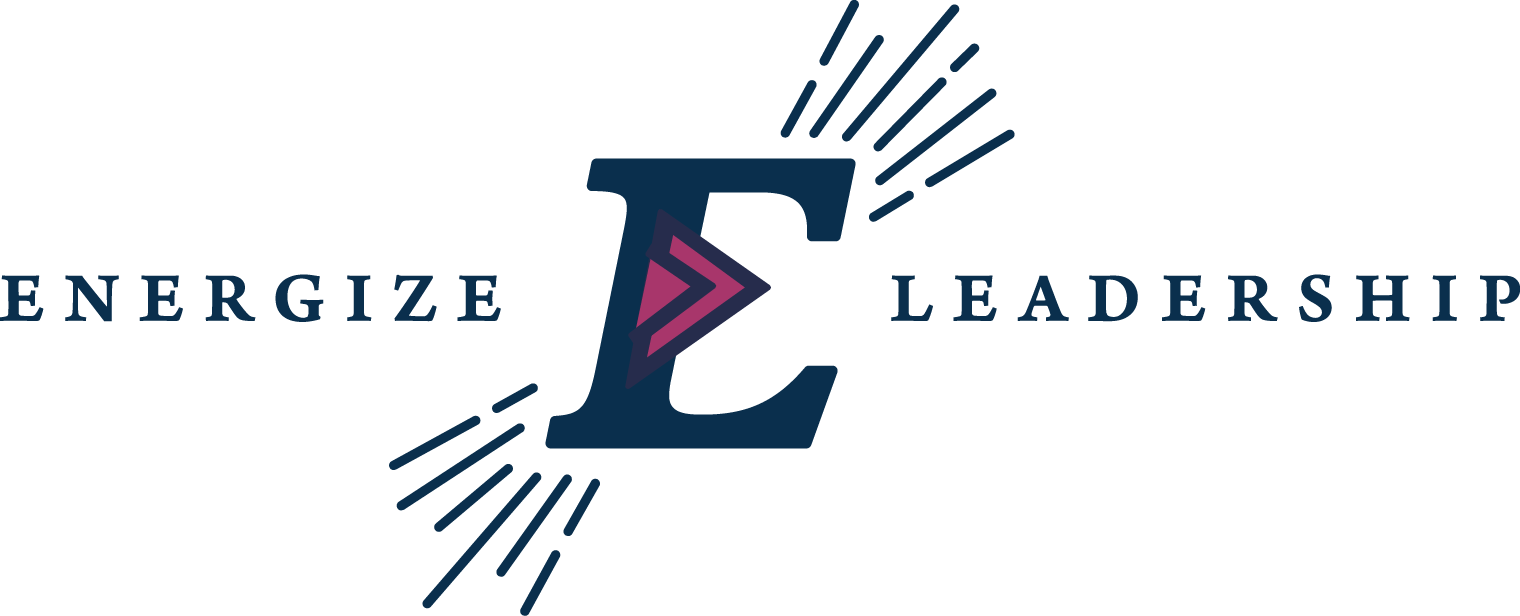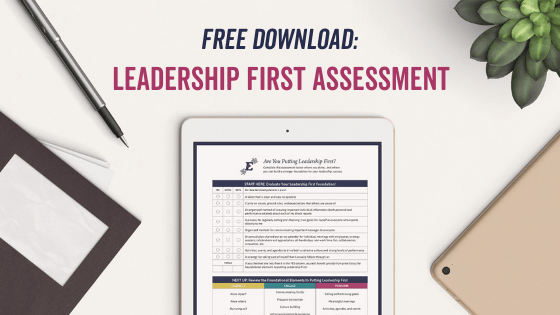6 Ways to Maximize the Effectiveness of Your Leadership Development Approach
In our recent blog post, HR and The Need For Leadership Development Solutions, we talked about the urgent need for effective leadership development solutions, and how the solutions that are being offered in the programs out there today are – in certain areas – missing the mark.
Being aware of a need for leadership development solutions is important, however, it is pointless if you don’t actually do anything about it.
Today, we’re going to run through the essential factors to keep in mind when designing or identifying the right leadership development initiative for you. It’ll help you maximize the effectiveness of your next generation of talent, and really enable them to ignite their leader within.
BUT FIRST… Are your leaders putting leadership FIRST?
We created a comprehensive for leaders that helps ensure that leadership development is done well in your organization. Click the image below to download it today:
Here we explore 6 critical components which influence the success (or failure) of a leadership development approach.
#1 CEO Buy-in
This is first and foremost. In order for any leadership development program to be successful, the head of the organization not only needs to get on board, they also have to be participative to truly demonstrate their support. In fact, research1 finds that successful leadership development programs are roughly five to six times more likely to involve senior leaders acting as project sponsors.
In the absence of a visible role model and staunch advocate in their leader, other leaders will be unlikely to follow suit and the initial enthusiasm associated with any initiative will likely wane over time.
#2 Coaching
We are no strangers to coaching here at Energize Leadership, and for good reason: coaches help you refocus and reclarify, hold you accountable, increase your confidence, challenge your ideas, and vastly improve your decision-making skills.
Bottom-line, coaches unlock leaders’ potential to maximize their own performance and that of their organization.
Below are 3 factors to consider when looking to invest in a leadersip coach:
- Coach across levels. Coaching is often reserved for executives, top performers, or low performers, but it is important not to ignore everyone else in between. As organizations become increasingly flat, remember that leadership skills can be put to use outside of the C-suite too – at various layers of the organization, and across all levels.
- Diversity. Ensure that a bench of coaches is available and that their backgrounds, styles, and expertise vary to some degree so that each leader is able to have the best-fit coach for their current development needs.
- Mix it up. It’s also a good idea for leaders to rotate coaches every 2-3 years as their development needs change. A long-term relationship with a coach changes the dynamic of the relationship in a way that is not always best suited to growth and development. If a long-term relationship works, consider adding an additional coach in a particular area of expertise to ensure the expansion of mindset and access to new thinking.
Note: Keep in mind that a majority of adult learning happens by doing, so the value from coaching is maximized when it is used to support on-the-job learning. In other words, coaching should never by itself constitute the entirety of any leadership development effort.
#3 Trainings
Leadership training, if done correctly, can empower and influence the leaders of your organization to achieve business and team goals.
Training also helps you increase productivity, retain employees, nurture future leaders, increase employee engagement, implement effective leadership styles, and improve decision-making skills (among many other benefits!).
Below are 3 factors to consider when looking to invest in leadersip training:
- Customization. Trainings should be customized to meet individual needs. This means that the use of pre- and post-assessments is strongly encouraged where possible, in order to gauge where a leader stands on the growth curve.
- Timing and format. Trainings should be designed as targeted and concentrated experiences, recur in just-in-time bursts of reinforcement, and include ongoing follow-up measures to check in on participant learning. This increases the chances for retention and is also likely to more effectively maintain participant interest and hold their attention during trainings.
- Leverage technology. The use of adaptive learning technology is also highly recommended as this allows for tailored lessons and activities to address the unique strengths and weaknesses of every participant. Digital platforms can host individualized leadership development, prompt leaders to work on specific kinds of behavior, and really support faster, more flexible learning.
At the end of the day, the success of leadership training always depends on the time, energy, and thought you put into it. Remember that ensuring you have the right people and resources is critical when mapping out your next training!
#4 Retreats
Leadership retreats are a great way to step back from your business to recenter and refocus. For one, they offer an invaluable opportunity for intentional and focused introspection — something that can be difficult for leaders to do around the noise of the office and in the thick of their daily schedules.
Retreats also provide an opportunity for leaders to connect with one another, to share challenges and learn from one another, and cross-pollinate ideas from real “in the trenches” experiences.
The beauty of retreats is that they give leaders the opportunity to experience something alongside their peers and reflect on what they are learning at the moment while connecting it to their everyday work experiences. This can create a significantly transformative experience from which to integrate meaningful changes back in the workplace.
P.S. Energize Leadership is hosting a Horse Retreat for Leaders on February 7! Click here to learn more.
#5 An organization-wide, holistic approach
It is extremely important to ensure that other formal systems (such as performance management systems, talent review systems, and so on) are working together with the overall leadership development effort.
Programs often fail when leaders try to implement new learnings back at work but are then not rewarded, or worse, met with blatant resistance. Other systems must be designed to work with rather than against the leaders’ efforts for change if the benefits of a leadership development effort are to be successfully realized enterprise-wide.
#6 Continuously Measure What Matters
Programs should be designed to encourage leaders to seek feedback from colleagues (direct reports, peers, other stakeholders). More formally, participants should also receive feedback as part of performance reviews and recognition systems. Ideally, evaluation should go beyond measurements of individual performance. Where are improvements in business performance being observed? How will you know if you are hitting the mark? Determine the intended outcomes at the outset and then continuously discuss progress.
In the end…
Needless to say, the design of any development program needs to be thoughtful, built from a systems perspective, and clearly align with the organization’s strategy, leadership goals, and culture. Leadership development efforts must ensure enough reach across the entire organization. Evidence2 shows that in order to truly embed change and maximize returns, leadership programs have to work at scale.
If you are tasked with making sure leadership development is done well in your organization, be sure to download our Leadership Assessment to see where your leaders shine… and where they can build a stronger foundation for your leadership success:
***PSST… DID YOU HEAR?
Energize Leadership is hosting an in-person workshop, Leadership First: Lay Out Your Leadership Strategy for 2019, where leaders roll up their sleeves, map out their year, streamline their leadership, and leave with a foolproof leadership action plan.
That’s right! We know it sounds like like fairy dust and rainbows, but you’re not dreaming, we promise! Click here to learn more about the Leadership First workshop on February 8th to make 2019 your most impactful year yet.
References





